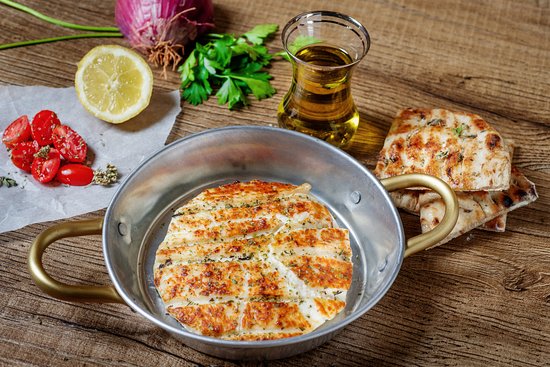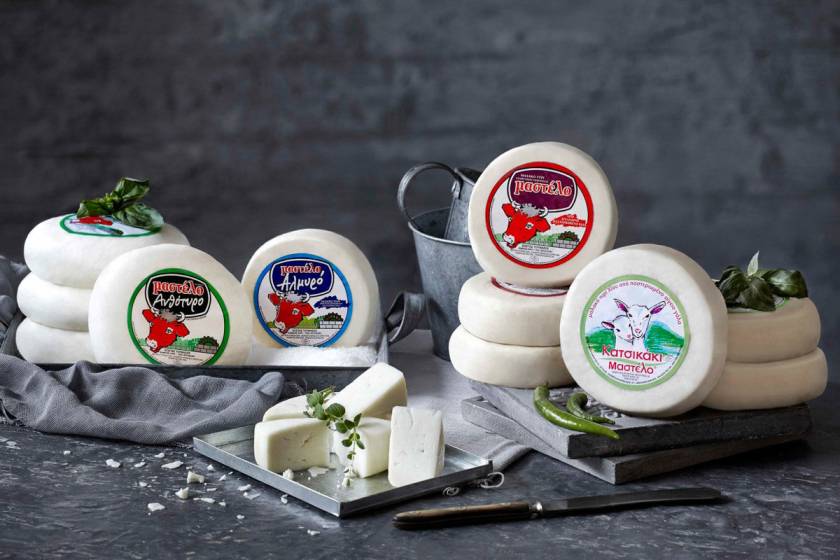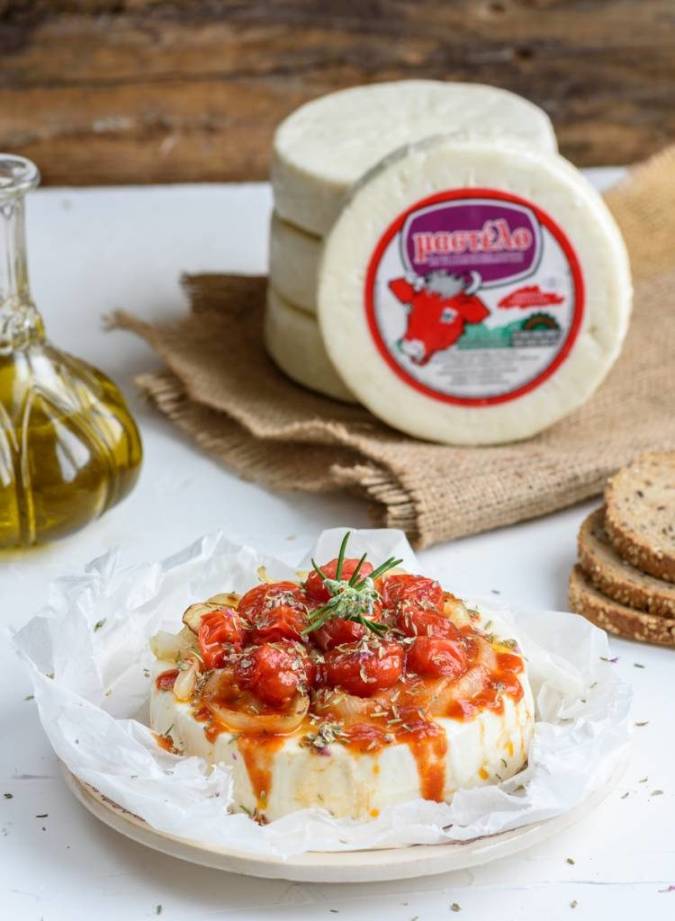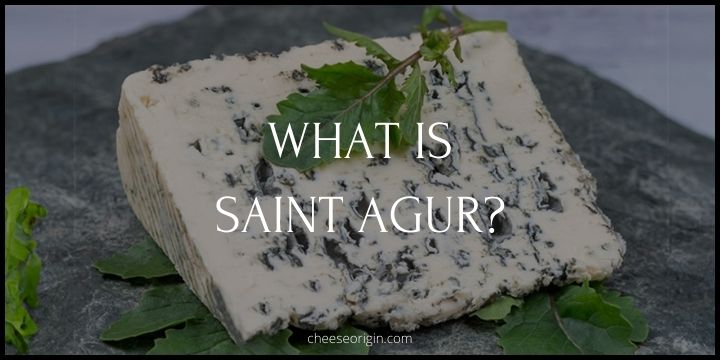What is Mastelo Cheese? Greece’s Hidden Delicacy

Welcome to a journey into the heart of Greece’s culinary tradition, where we’ll explore a hidden gem – Mastelo Cheese. This remarkable cheese is not just a dairy product, but a testament to Greece’s rich cultural heritage and the island of Chios’ unique gastronomic identity. Produced exclusively in Chios, Mastelo cheese offers a taste of the Aegean like no other.
Quick Facts About Mastelo Cheese
| Quick Facts | Details |
|---|---|
| Origin | Chios, Greece |
| Type | Semi-hard cheese |
| Made From | Cow’s milk |
| Aging Time | Minimum of 3 months |
| Flavor Profile | Mild, slightly sweet, buttery |
| Texture | Smooth, elastic, similar to mozzarella |
| Cooking Uses | Grilling, baking, frying |
| Pairings | Red wines, fruits, honey |
| Popular Dishes | Mastelo Saganaki, Mastelo Roast Lamb |
| Shelf Life | Can last several weeks if properly stored |
| Nutritional Value | High in protein and calcium, contains probiotics |
| Availability | Mostly local to Greece, but can be found in specialty cheese shops worldwide |
| Production Method | Traditionally made by hand |
| Unique Feature | Often cooked in red wine or marinated in aniseed |
| Storage | Keep in refrigerated, tightly wrapped in wax paper |
| Alternative | If unavailable, can be substituted with halloumi or mozzarella |
What is Mastelo Cheese?

Mastelo cheese is a unique and flavorful dairy product that has its roots in the charming island of Chios, Greece. It’s a Greek cheese steeped in tradition, first produced in 1994, and continues to be a beloved element of Greek cuisine today. This cheese is exclusively produced in Chios, ensuring that it maintains its authentic characteristics and quality.
What sets Mastelo apart is its production process. The cheese is made from local cow’s milk or goat’s milk, depending on the variant, using traditional manufacturing methods. The cow’s milk variant is white, with a soft, elastic texture and a mild salty taste, similar to halloumi. On the other hand, the goat’s milk variant has a soft salted taste and can replace mozzarella on pizzas and pies.
Another intriguing aspect of Mastelo cheese is its versatility in cooking. From grilling to baking, this cheese holds its own and adds a delightful flavor to various dishes. Whether it’s replacing mozzarella on your favorite pizza or being the star ingredient in a traditional Greek pie, Mastelo cheese always delivers a taste that’s truly Greek.
Lastly, Mastelo cheese is not just a delight for the palate but also a healthy addition to your diet. It’s made from high-quality raw materials, making it a good source of protein and calcium. So, the next time you’re looking for an interesting cheese to try, remember Mastelo – a little slice of Greece’s culinary heritage.
What Does Mastelo Cheese Taste Like?
Mastelo cheese is slightly salty with an unmistakable milky taste that shines through in every bite. This cheese is somewhat similar to Halloumi, but it differs by being less salty and having a milkier taste.
The texture also plays a significant role in its taste. It’s a fresh, white whey cheese, akin to ricotta in texture, and has a smooth, elastic consistency. When grilled, the cheese evokes its milky taste even more prominently, making it a perfect choice for dishes that require grilling or frying.
The cheese’s flavor is not overly powerful, which allows it to complement a variety of dishes without overpowering them. Its slightly salty taste and aroma of milk make it a cherished ingredient in many restaurants. Whether enjoyed alone with a drizzle of olive oil or used in a complex recipe, Mastelo cheese always imparts a distinctive, delightful flavor.
Mastelo Cheese Tasting Notes

- Texture: Semi-hard, smooth, and elastic, similar to mozzarella, which makes it versatile in cooking.
- Flavor: Mildly salty with a distinctive milky taste, providing a balanced flavor profile.
- Aroma: It has a faint, fresh milk aroma that is not overpowering.
- Cooking Behavior: When grilled or fried, the cheese maintains its shape while developing a beautiful golden crust, and its milky taste becomes more prominent.
- Aftertaste: Leaves a pleasantly mild, slightly sweet aftertaste.
- Visual: White in color, with a shiny surface when fresh.
How is Mastelo Cheese Made?
Creating Mastelo cheese is a delicate process that involves traditional manufacturing techniques and high-quality raw materials. Here’s a step-by-step guide on how this exceptional cheese is made:
- Procurement of Milk: The process begins with the collection of full-fat cow’s or goat’s milk. The cows and goats are reared in Chios, Greece, and their diet often includes local herbs, which contribute to the distinctive flavor of the cheese.
- Pasteurization: The collected milk is pasteurized to ensure safety and quality. This process involves heating the milk to a specific temperature to kill off any harmful bacteria.
- Adding Rennet and Starter Cultures: Once pasteurized, the milk is cooled, and rennet and starter cultures are added. These ingredients help coagulate the milk and begin the fermentation process, which develops the cheese’s unique flavor.
- Curd Formation: The added rennet causes the milk to curdle, forming solid curds and liquid whey.
- Draining the Whey: The curds are then cut and stirred to release more whey. Afterward, the whey is drained off, leaving behind the solid curds.
- Pressing and Shaping: The drained curds are pressed into molds to shape the cheese. This also helps remove any remaining whey.
- Salting: The cheese is then salted. This not only adds flavor but also acts as a preservative.
- Maturing: The cheese is left to mature for a specific period. During this time, it develops its characteristic texture and flavor.
- Packaging and Distribution: Once matured, the cheese is packaged and ready for distribution.
Remember, the taste and quality of Mastelo cheese heavily rely on the quality of the milk and the traditional manufacturing process, making each batch a labor of love.
10 Best Mastelo Cheese Substitutes
| Substitute | Short Description | Origin |
|---|---|---|
| Muenster | Buttery and soft when young, this cheese is great for burgers and sandwiches. | France, USA |
| Monterey Jack | Known for its mild flavor and smooth texture, it melts well and can be used in various dishes. | USA |
| Provolone | A semi-hard cheese with a smooth texture and mild flavor, it’s an excellent choice for grilling. | Italy |
| Young Pecorino | This hard, salty cheese is made from sheep’s milk and is often used in pasta dishes. | Italy |
| Dairy-free Mozzarella | A good option for those who are lactose intolerant or vegan, it mimics the texture and taste of traditional mozzarella. | Various |
| Goat’s Milk Cheese | It has a soft and elastic texture with a salty flavor, similar to Mastelo cheese. | Various |
| Boerenkaas | A hard, artisanal cheese, often used as a low-fat substitute. | Netherlands |
| Gruyère | Known for its creamy, nutty flavor, it’s often used in baking and cooking. | Switzerland |
| Halloumi | Similar to Mastelo in texture and taste, it holds up well to grilling and frying. | Cyprus |
| Ricotta | A fresh, white whey cheese, akin to Mastelo in texture. | Italy |
What Pairs Well With Mastelo Cheese?

Food that goes well with Mastelo Cheese:
| Category | Food |
|---|---|
| Appetizers | Bruschetta with grapes, Saganaki (Pan-seared Greek cheese appetizer) |
| Main Dishes | Greek shrimp saganaki, Beetroot burger, Grilled stuffed thrapsala with red pepper and mint |
| Sandwiches & Pizzas | Used as a mozzarella substitute in pizzas, sandwiches with avocado and poached egg |
| Stuffed Dishes | Used as stuffing in various meat and vegetable dishes |
| Breakfast | Fried egg with pita bread and za’atar |
| Desserts & Snacks | Served with marmalade or chutney, Grilled with fig jam and apaki (smoked pork meat) |
Also read: 11 Best Crackers that Pair Well with Cheese
Beverage that goes well with Mastelo Cheese:
| Category | Beverage |
|---|---|
| Alcoholic Beverages | Ouzo, Metaxa, Tsipouro, Retsina, Wine |
| Non-Alcoholic Beverages | Tea, Coffee, Drinking Chocolate, Lemonade, Soda, Chicha Morada |
| Traditional Greek Beverages | Greek Coffee |
Also read: Top 10 Champagne & Cheese Pairings to Try at Least Once
Also read:
- Top 11 Most Popular Semi-soft Cheeses in the World
- Top 10 Most Popular Cheeses in Ireland
- What is Lanark Blue? Scotland’s Roquefort Revolution
- What is Gorgonzola Piccante? Italy’s Sharp Blue Cheese Wonder
- What is Gorgonzola Dolce? Italy’s Creamy Blue Treasure
- What is Maytag Blue? America’s Signature Blue Cheese
- What is Cashel Blue? A Unique Taste of Irish Heritage





